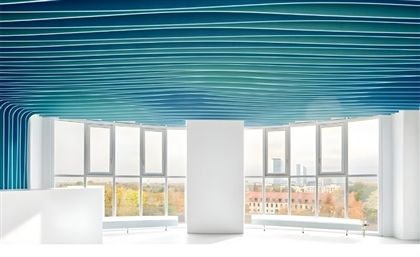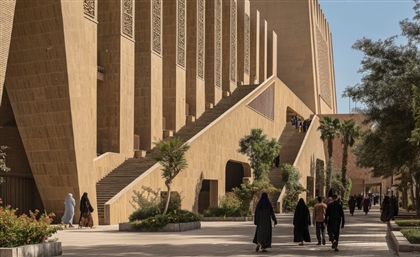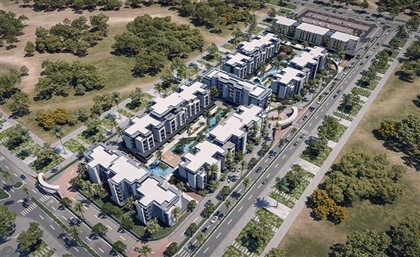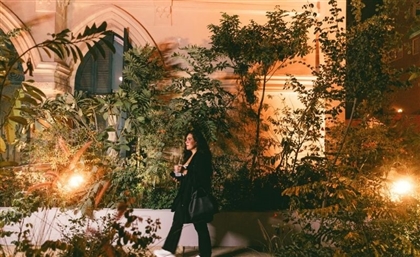Sobokuya Reinterprets Japanese Building Traditions at Dubai Design Wee
Sobokuya debuts in Dubai with 'Chatai', a handcrafted pavilion celebrating Japanese building traditions.
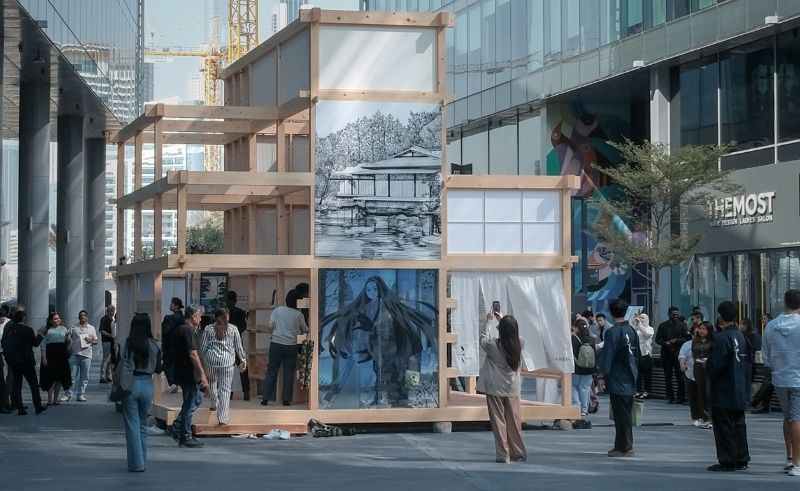
At the 2025 edition of Dubai Design Week, Japanese design and construction firm Sobokuya made its Middle Eastern debut with 'Chatai', a handcrafted pavilion that connects centuries-old craft with contemporary architecture. Created in collaboration with Nikken Sekkei, the installation introduces Sobokuya's approach following the opening of its Dubai office, which has been operating since the beginning of November. Rooted in the essence of Japanese culture, 'Chatai' takes its name from two familiar archetypes: 'Chashitsu', the traditional tea room, and 'Yatai', the informal street-side food stall. Together, they convey intimacy and openness, qualities that Sobokuya sought to merge in a single architectural form. “It’s a reinterpretation of Japanese traditions,” architect Anas A. Rashid tells SceneHome. “A place that brings people together in a space that is light and airy.”
Rooted in the essence of Japanese culture, 'Chatai' takes its name from two familiar archetypes: 'Chashitsu', the traditional tea room, and 'Yatai', the informal street-side food stall. Together, they convey intimacy and openness, qualities that Sobokuya sought to merge in a single architectural form. “It’s a reinterpretation of Japanese traditions,” architect Anas A. Rashid tells SceneHome. “A place that brings people together in a space that is light and airy.”-91381ed6-5b82-458c-ace3-341eb96c966b.jpg) Constructed entirely from timber and assembled without nails or metal joints, the pavilion reflects precision and care. Every beam and column has been cut, carved, and fitted by hand using traditional Japanese joinery, a craft that Sobokuya continues to uphold. “The woodworking we do is not simply traditional, but rather a reinterpretation of that tradition,” explains Loïca Devos, one of Sobokuya’s architects. “We are using traditional techniques and reinterpreting this centuries-old craft to make modern architecture. You cut and carve and do the assembly, no nails, no iron. It’s a very rare skill now, and very few carpenters can do it. We really wanted to keep this alive.”
Constructed entirely from timber and assembled without nails or metal joints, the pavilion reflects precision and care. Every beam and column has been cut, carved, and fitted by hand using traditional Japanese joinery, a craft that Sobokuya continues to uphold. “The woodworking we do is not simply traditional, but rather a reinterpretation of that tradition,” explains Loïca Devos, one of Sobokuya’s architects. “We are using traditional techniques and reinterpreting this centuries-old craft to make modern architecture. You cut and carve and do the assembly, no nails, no iron. It’s a very rare skill now, and very few carpenters can do it. We really wanted to keep this alive.”-64d06e6e-2312-418c-9109-d04b0488ffca.jpg) Sobokuya’s practice is built on this commitment to craftsmanship, which has guided its gradual expansion outside Japan. After establishing an office in Vietnam to sustain and share traditional methods, the studio is now extending that approach to the UAE. “When you see your craft every day, you stop noticing how special it is,” Loïca Devos continues. “But when you start showing it overseas, people’s interest helps you rediscover its value. That’s why we wanted to expand, slowly and carefully, so more people can experience it.”
For Chatai, Sobokuya and Nikken Sekkei worked together from early concept sketches to on-site construction. The structure’s rhythm is defined by its exposed framework, with columns and beams intersecting through interlocking joints that stabilise the timber in two directions. The wood’s grain and soft finish bring warmth and balance, giving the pavilion its calm and tactile quality.
Sobokuya’s practice is built on this commitment to craftsmanship, which has guided its gradual expansion outside Japan. After establishing an office in Vietnam to sustain and share traditional methods, the studio is now extending that approach to the UAE. “When you see your craft every day, you stop noticing how special it is,” Loïca Devos continues. “But when you start showing it overseas, people’s interest helps you rediscover its value. That’s why we wanted to expand, slowly and carefully, so more people can experience it.”
For Chatai, Sobokuya and Nikken Sekkei worked together from early concept sketches to on-site construction. The structure’s rhythm is defined by its exposed framework, with columns and beams intersecting through interlocking joints that stabilise the timber in two directions. The wood’s grain and soft finish bring warmth and balance, giving the pavilion its calm and tactile quality.-7e0f08f0-d132-46f3-ad10-7a28f3f3345b.jpg) Within the structure, traditional shoji screens filter daylight through translucent layers, while noren fabric, often seen at the entrances of ramen stalls, defines thresholds and creates a gentle sense of privacy. At the centre, a counter is surrounded by a tatami-lined bench, creating a point of gathering and reflection where visitors can observe ikebana, the Japanese art of floral arrangement.
Within the structure, traditional shoji screens filter daylight through translucent layers, while noren fabric, often seen at the entrances of ramen stalls, defines thresholds and creates a gentle sense of privacy. At the centre, a counter is surrounded by a tatami-lined bench, creating a point of gathering and reflection where visitors can observe ikebana, the Japanese art of floral arrangement.-80c95b36-59fc-4d36-b7b5-c144f614e83d.jpg) Above, a mirrored ceiling is suspended within a slender tower of wood and fabric, extending the visual field and drawing attention to the details of the joinery. “When you look up, you get to see all the details of the structure and the fabric,” Sobokuya architect Anas A. Rashid notes. “The reflection elongates the space and allows you to notice what’s often unseen.”
Above, a mirrored ceiling is suspended within a slender tower of wood and fabric, extending the visual field and drawing attention to the details of the joinery. “When you look up, you get to see all the details of the structure and the fabric,” Sobokuya architect Anas A. Rashid notes. “The reflection elongates the space and allows you to notice what’s often unseen.”-532d3e41-66c4-494f-961a-f93313a8b6e6.jpg) This sensitivity to material and atmosphere was strengthened through collaborations with Hiroshima Jozai, a century-old tatami manufacturer; Panasonic Electric Works Middle East & Africa, providing ambient lighting solutions; Dai Nippon Printing, contributing with highly durable decorative panels; and Ikebana International’s Dubai Chapter, presenting Japanese floral arrangements. Locally, Abjad Design handled display and graphic design, grounding the pavilion within the UAE’s creative context.
This sensitivity to material and atmosphere was strengthened through collaborations with Hiroshima Jozai, a century-old tatami manufacturer; Panasonic Electric Works Middle East & Africa, providing ambient lighting solutions; Dai Nippon Printing, contributing with highly durable decorative panels; and Ikebana International’s Dubai Chapter, presenting Japanese floral arrangements. Locally, Abjad Design handled display and graphic design, grounding the pavilion within the UAE’s creative context.
- Previous Article Park St. Edition Brings Vertical Mixed-Use Living to New Cairo
- Next Article Spot On: Cairo's 'Enlighten' Debuts Into Personalised Lighting




